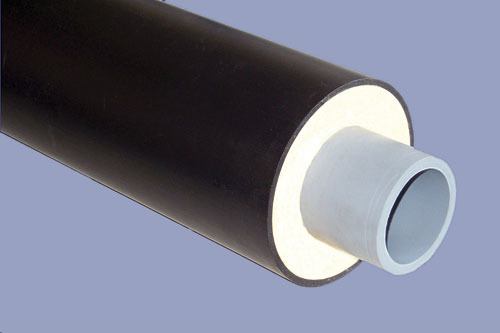Pipe lagging is made in a variety of different materials each suiting a slightly different need. The type you use will be dependent on things like whether the pipe is outside or if it contains a hot or cold liquid for example.
But with some many varieties out there, with their variety of needs to cater for, it can be hard to know which type to use.
Let’s look at the materials pipe lagging is made of and the reasons for such use.
As with all situations which require specific knowledge it is always best to seek out professional help if you are unsure about your pipe lagging needs.
According to Wikipedia pipe lagging can be made from a variety of materials including Polyethylene, rigid foams, flexible elastomeric foams, cellular glass, glass wool and mineral wool to name but a few.
The different materials enable different levels of acceptable temperature exposure with some able to cope with as low as -150 degree centigrade (Polyurethane Foam) or as high as 1750 (Refractory Fiber). Typically, those would be used in a more industrial setting.
Some materials may be more suited to acoustic (sound) insulation than for insulating against heat or cold.
Polyethylene is actually a type of plastic. The most commonly used type in the world which is found in virtually everything ranging from plastic bags, plastic bottles and, obviously, pipe insulation. It is the denser version of this that makes up the pipe lagging.
For the average punter what would usually be recognized as pipe insulation are the long cylindrical polyethylene foam pipes found in large hardware stores like B&Q or used as flotation devices in a swimming pool.
Mineral Wool, according to Wikipedia, ‘are inorganic strands of mineral fibre bonded together using organic binders’. It is said that ‘Mineral wools are capable of operating at high temperatures’(up to 700 degrees centigrade) and ‘are used on all types of pipework, particularly industrial pipework operating at higher temperatures’.
Global brand Armacell produces one of the current leading flexible elastomeric foams for pipes which they call ArmaFlex. It ‘is the market leader in high-performance, fiber-free, closed cell elastomeric foam insulation for HVAC, plumbing and refrigeration applications’ according to their website. Along with polyethylene this type is also one of the more commonly found and recognizable to the average person.
Regardless of the material used you will generally find a lot of the commonly used pipe lagging comes already formed. The cylindrical shaped type can be found sold as a specific size or in a made to measure way. You will find varying thickness in the pipe insulation which can also be found to suit varying dimensions of pipes.
“Getting he right lagging, made from the right material, for the right job at the right price, is something you shouldn’t have to worry about,” says Mr ??? From pipelagging.com. “Use the expertise on hand when buying your lagging,” he continued. “Provide as much information as possible and ask questions, always ask questions. “Then let the experts let you know what your options are. “It can be that simple,” he finished.






